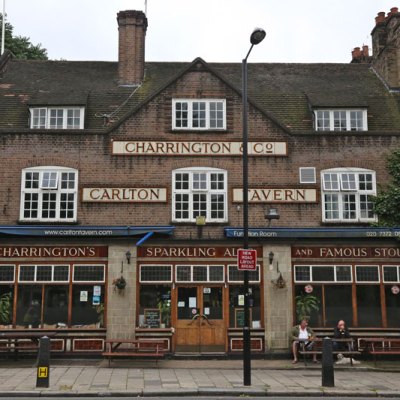The procedure for protecting buildings of historic or architectural interest is now 70 years old. What are the flaws of the current listing system and how can it be improved?
Henrietta Billings
Director of SAVE Britain’s Heritage
England’s listed building system celebrated its 70th anniversary this year (the system varies across the UK) with a clutch of additions, such as a London cabbie’s shelter, a ‘luxury Hobbit House’ in Yorkshire, and a First World War wireless station. These high-profile designations illustrate the extraordinary range of listed buildings across the country, and help draw the public’s attention to ‘the list’. But behind the headlines, the listing system is also our most powerful mechanism for the protection of our built heritage. While it works well in part, there are some glaring omissions.
Anyone can submit an application to ‘spot list’ so, in theory, a building under threat will be assessed immediately. Statutory protection is written into the planning regulations – you must have regard for listed buildings, and show how proposals will not harm their special interest. It is a criminal offence to demolish or alter a listed building without consent. It is thankfully very difficult to demolish listed buildings – but change can be allowed. Historic England is keen to demystify the process by encouraging people to ‘enrich the list’ with facts, anecdotes, and recent photographs. All this helps spread the word about why protecting and looking after our listed buildings is important.
The weak spot in this seemingly powerful array of protection measures is that there is no interim protection for buildings waiting to be assessed. Owners can legally strip buildings of historic features ahead of Historic England assessments – to reduce the likelihood of designation. Ever since the infamous demolition in 1979 of the Firestone Factory in Brentford over the August bank holiday – the day before it was due to be listed – there have been calls for interim protection to plug this vulnerability in the system.
In 2015 the Carlton Tavern, a ‘remarkably intact’ 1920s pub, was flattened just before Historic England was due to recommend listing. And at the end of August 2017, owners of a 17th-century former hotel and bar in Bristol city centre destroyed an ornate 400-year-old ceiling, ahead of a planned site visit and listing review. Building Preservation Notices are available, but at SAVE Britain’s Heritage we find that councils are increasingly reluctant to use them – largely because of the risk of financial compensation if the listing proposal fails.
In the London case, the owners are being forced by Westminster City Council to rebuild the pub in replica, and we are backing calls for similar sanctions in Bristol. The demolition has been widely condemned and we are pleased to see some MPs adding their voices to the chorus of concerns. I hope that this will help highlight the urgency for action by the Secretary of State for Digital, Culture, Media and Sport to close the legislative loophole.
The listing system also operates in a reactive way. Buildings will not be assessed for listing unless they are of obvious historical or architectural significance, part of current or planned thematic review, or under imminent danger of demolition. People contact SAVE every week about threatened buildings – such as the Victorian Smithfield General Market – that don’t quite make the grade for listing and therefore go unprotected. Imminent threat often means close-to-bulldozer-ready, which is frustrating on all sides and adds an unnecessary reactionary element to the process. Applications for a certificate of immunity from listing go some way to address this, but a failed application results in listing – and therefore carries its own risk to owners and developers.
SAVE has long argued that the assessment process should move away from imminent threats to geographical studies, such as town and city surveys that identify significance and historical interest at an early stage. The Pevsner architectural guides, which are updated regularly and cover the country county by county, would be a good place to start to address this. A significant central-government boost to Historic England’s capacity to carry out surveys and more listings would be another.
This anniversary of the listing system has helped bring heritage into the spotlight. With the right legal adjustments and implementation, we can make sure we have plenty more to celebrate come 2087.
Illustration by Graham Roumieu/Dutch Uncle

Douglas Murphy
Architecture critic and author of, most recently, Nincompoopolis: The Follies of Boris Johnson (Repeater Books)
Today’s culture of online image consumption has had interesting effects on public attitudes to architecture. Recent styles, such as brutalism or postmodernism, are appreciated by such numbers of aficionados as would have been inconceivable only a few years ago. But even if their imagery is popular it doesn’t necessarily mean much for the buildings themselves, as the remaining constructions of the industrialised 20th century start to drag beyond their material lifespan.
Listing across the UK is fairly uncomplicated for a building of a certain age: if it’s old enough, then it’s worthy, and almost all buildings constructed before 1840 that are reasonably intact are protected. Where questions and ambiguities tend to appear is in the evaluation of more recent structures, where the criteria of relative quality, historic importance and – most difficult – use, come into play.
It is fairly easy to decide upon the protection of more recent cultural buildings, such as the 1951 Royal Festival Hall in London, the first post-war building to be Grade I listed. These are often set at focal points in the city, and fulfil a monumental purpose, both of which encourage a permanent civic use. But protection is still useful: in 2013, the Southbank Centre next door narrowly failed in its attempt – only feasible due to its unlisted status – to attach money-spinning event spaces to the complex.
Housing should also be a simple case, due to the fact that it is a land use that rarely changes, but when there are property crises and developers can scent profit then it can be difficult. On the one hand, famous housing estates such as Trellick Tower or Alexandra Road, both in west London, are fairly secure thanks to their listed status, but elsewhere Central Hill and Cressingham Gardens, both in the London Borough of Lambeth, are threatened after applications for listing were turned down. Here, if you’re a council tenant the fact that your property is well-designed not only improves your domestic life, but may also protect from having the walls torn down around you.
In recent years bolder stances have been taken by government on the post-war era: as culture minister, Ed Vaizey bravely put some monstrosities on to the list and, despite failed campaigns such as at Robin Hood Gardens in Poplar, the outlook for the concrete era is more benign than it has been for a long time.
The biggest challenge to the listing system is in the consideration of commercial buildings. Flexibility is key for offices, and the intended lifespan of new buildings of this type is often as short as 30 years. This means that there is now a different kind of pressure when it comes to the question of postmodernism, much of which is reaching the 30-year benchmark for consideration for listing. If the most representative architecture of the 1960s was housing, in the 1980s it was the office block. But in many cases, such as Stirling and Wilford’s Number One Poultry, finished in the 1990s and listed last year, owners see the idiosyncrasies of ‘pomo’ as a drain on their potential rent.
One upshot of this problem is the rise of ‘façadism’: the retention of the half-metre or so of stone at the front of a building, with the gutting of all its internal fabric to create more up-to-date spaces behind. It’s not hard to see why this has become so popular as a way to resolve the social and cultural pressure for preservation and spatial continuity with the economic demand for fresh space. And if you don’t look too hard, then from the street the difference is often hard to tell.
Façadism raises interesting questions about the wider purpose of listing. To what extent is the internal fabric, or the functional use of a building, part of its unique historic quality? Is the understanding of architecture as ‘space and façade’ too reductive, and does it favour certain types of architecture – flat but decorative classicism over more bespoke or ‘sculptural’ work, making our cities into Potemkin villages? Add to this the fact that advances in technology – such as the potential for buildings to be ‘digitally preserved’ through 3D scanning and viewed as ‘augmented reality’ – are increasingly going to be used in arguments for demolition, and it’s clear that there are some problems looming in the distance.
From the October 2017 issue of Apollo. Preview and subscribe here.



